Applications
The term applications is used to describe utilities and their associated packages. In Linux, this essentially means anything that is natively installed as part of a distribution, installed through an update manager, or obtained from a third-party source. Although we can have confidence in natively installed applications along with those obtained through legitimate sources, the opportunity for compromise is still present. Our main security concerns with applications come from those not obtained through legitimate sources. Manipulating applications one of the many defense evasion techniques and is often used by rootkits. Knowing how and where to find application information is important to assessing applications as valid or malicious.
Installed Packages:
rpm -qa
# The rpm utility is the RPM Package Manager used to manage packages of type .rpm.
# The -q option is used for queries.
# The -a option is used as a select-option to select all packages.
yum list installed
# The yum utility is the Yellowdog Updater Modified, which is essentially an interactive front end for rpm.
# The list option is used to list various information specified by a following option.
# The installed option is used to display information only about installed packages.
rpm -qa --last | less
# The --last option lists all installed packages in order of installation date, from newest to oldest.
# Piping into less let's us explore package installation dates in chunks.
Individual Package Information:
rpm -ql <PACKAGE_NAME>
# The -l option is used for listing.
# This command allows us to see all the files associated with an installed package.
rpm -qi <PACKAGE_NAME>
# The -i option is used for info.
# This command allows us to see general information for a specific package.
Exploring Binaries:
ls -haltr /<BINARY_DIRECTORY>/
# The -t option is used to list contents by modification time. By default, it lists newest modification first.
# The -r option is used to reverse the sorting of contents. Used in conjunction with -t, it lists newest modification last.
ls -lai | sort -n
# The -i option is used to print the inode number of each file.
# The sort utility is used sort lines of text.
# The sort -n option sorts the output numerically.
which <COMMAND>
# The which utility is used to show the full path of a specified command.
# Remember that a command references an actual physical file that is in an executable format. In Linux, that format is ELF, or executable and linkable format.
ls -l <COMMAND_PATH>
# Shows general file information for a command binary.
file <COMMAND_PATH>
# Shows type information for a command binary.
Package Verification:
rpm -Va
# The -V option is used to verify.
# S is file size.
# M is file mode.
# 5 is MD5 hash of file.
# D is file's major and minor numbers.
# L is file's symbolic link contents.
# U is file owner.
# G is file's group.
# T is modification time.
# c appears if file is a configuration file.
# Source: http://ftp.rpm.org/max-rpm/s1-rpm-verify-output.html
Individual Package Verification:
rpm -V <PACKAGE_NAME>
# Verifies package and associated files.
rpm -Vf <FILE_NAME>
# Verifies package that owns the file FILE_NAME
Demonstration:
We’ll create our own “backdoored” binary to demonstrate how to find malicious applications using some of the mentioned techniques. First, make a copy of the ‘more’ utility and save it to the /tmp directory using the command:
cp /usr/bin/more /tmp/
Then, rename the real more utility in its current location to ‘more.bak’:
mv /usr/bin/more /usr/bin/more.bak
Next, we’ll create our faux ‘more’ utility to replace the legitimate one. Using the text editor of your choice, create a C program file titled ‘more.c’ with the following contents:
#include <stdio.h>
#include <unistd.h>
/*C program used to spawn a /bin/sh process disguised as a more process. */
int main() {
/*setuid(0);
setgid(0);*/
execl("/bin/sh", "more", NULL);
return 0;
}
If you’re familiar with C, don’t worry about the commented section yet, we’ll be using it later to demonstrate another concept (spoiler alert). Compile your C program using the syntax:
gcc more.c -o more
Now that our imposter binary is created, let’s do some quick fixes to make it look like the legitimate ‘more’ utility. We’ll first change the permissions to match the original:
chmod 755 more
Next, we’ll change the owner to root (if not already the owner):
chown root:root more
Lastly, we need to replace the legitimate one using the command:
mv more /usr/bin/more
Before we put our “backdoored” utility into action, let’s take a look at it in context with other utilities present in the /usr/bin directory, specifically the legitimate ‘more’ utility:
ls -al /usr/bin | less
# To compare it to all utilities.
ls -al /usr/bin | grep more
# To compare it to the real 'more'.
Are there any immediate tip-offs that it may have been tampered with? Go ahead and use the fake ‘more’ utility to “read a file”:
more /etc/passwd
What actually happened? Take a look at the current running process list:
ps aux
We see the process titled ‘more’, but we actually spawned another shell process. This demonstrates how an attacker might be able to cover their activities using altered applications with legitimate names. Use some of the other methods to identify other cues that this utility has been altered. When you’re done, you can replace your faux ‘more’ binary with the legitimate one by using the command:
mv /usr/bin/more.bak /usr/bin/more
